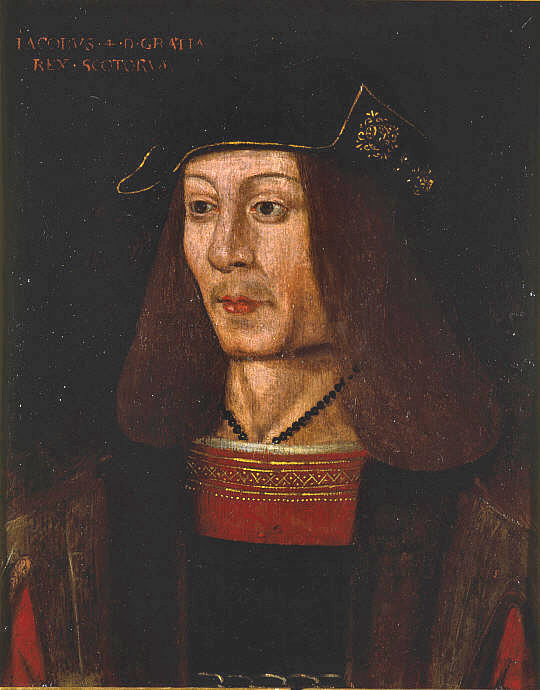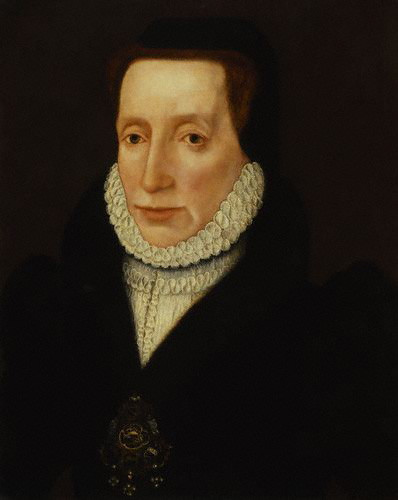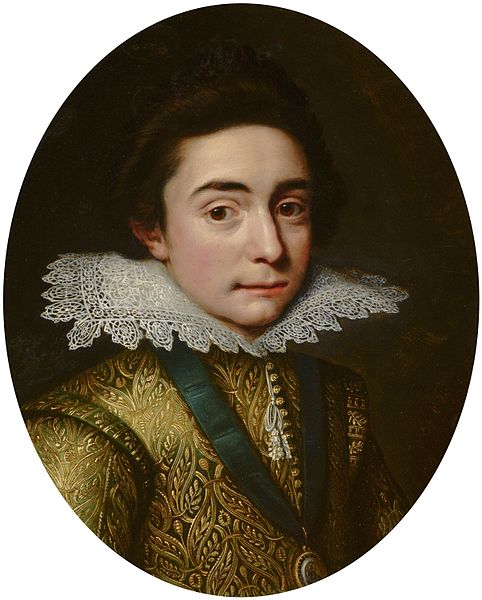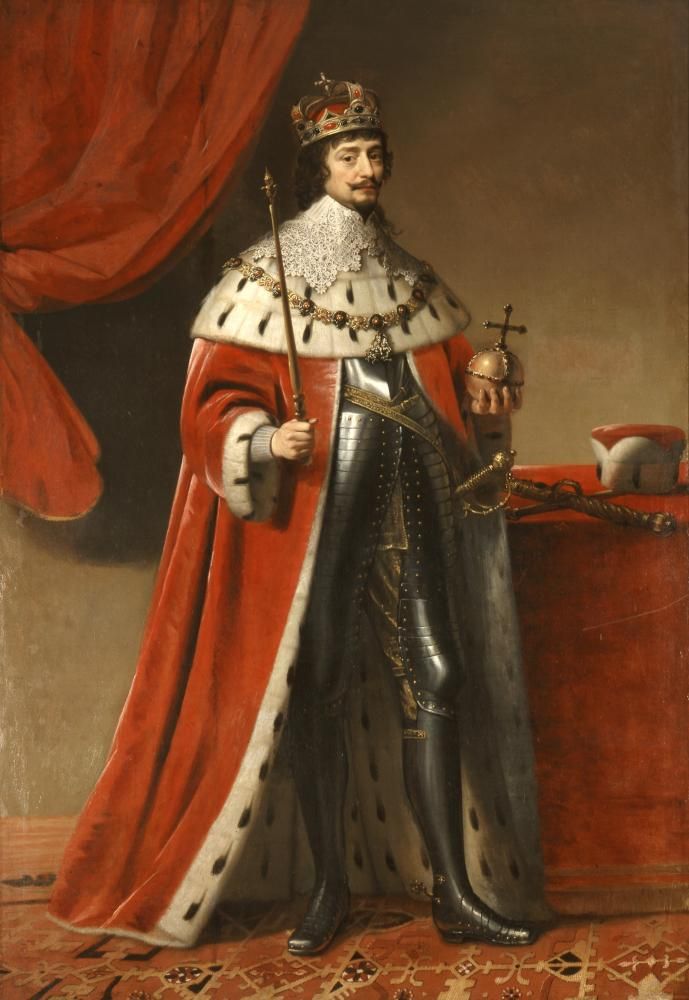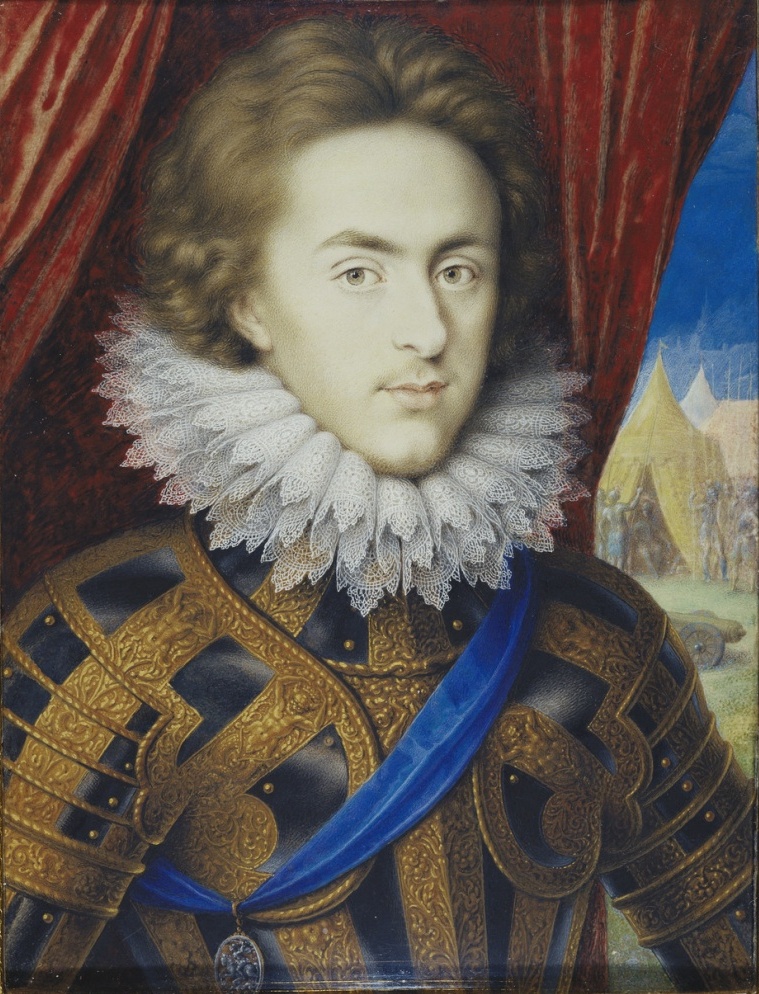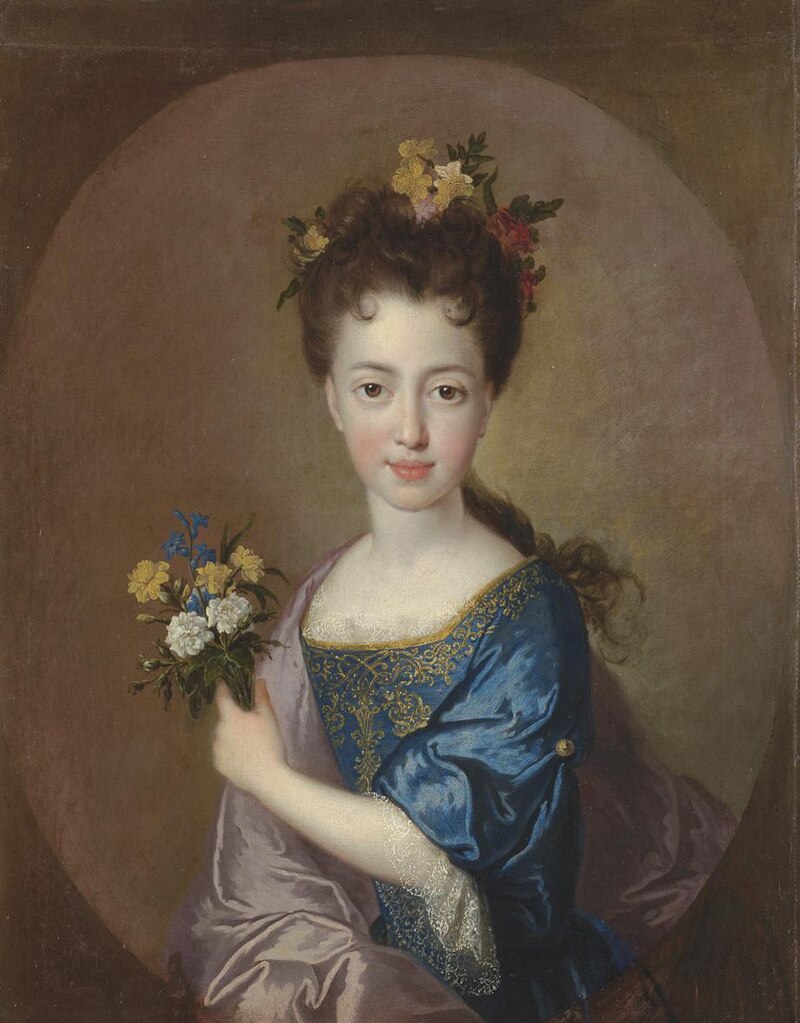by Susan Flantzer
© Unofficial Royalty 2016

by Allan Ramsay, 1745; Credit – Wikipedia
Fans of Diana Gabaldon‘s novels of The Outlander series and the television series of the same name know that the Battle of Culloden in 1746 resulted in a decisive defeat of the Jacobite forces that wanted to restore the heirs of Roman Catholic Stuart King James II of England/ VII of Scotland to the throne. Charles Edward Stuart was the instigator of the Jacobite rising of 1745 which culminated in the Battle of Culloden.
Charles Edward Stuart (Bonnie Prince Charlie, The Young Pretender) was born at the Palazzo Muti in Rome, Italy on December 31, 1720. He was baptized on the day of his birth and given a long string of names: Charles Edward Louis John Casimir Sylvester Severino Maria. Charles was the elder of the two sons of James Francis Edward Stuart, The Old Pretender, who was the son of the exiled King James II of England/VII of Scotland. Charles’ mother was Maria Clementina Sobieska, the granddaughter of King Jan III Sobieski of Poland. After his grandfather James II lost his throne, the Jacobite (from Jacobus, the Latin for James) movement formed. The goal of the Jacobites was to restore the Roman Catholic Stuart King James II of England/VII of Scotland and his heirs to the thrones of England and Scotland. As the first-born son of the titular King James III of England/VIII of Scotland, Charles was styled as Prince of Wales and Duke of Cornwall from birth.
Charles had one younger brother:
After the failure of the 1715 Jacobite Rising, Charles’ father, James Francis Edward, (henceforth called James) lived in Avignon, then a Papal territory, now in France. In 1717, Pope Clement XI offered James the Palazzo Muti in Rome as his residence. James then organized a Jacobite court in Rome. Further efforts to restore the Stuarts to the British throne in 1719 and 1722 were unsuccessful. On September 3, 1719, James Francis Edward Stuart married Maria Clementina Sobieska. Their two sons grew up in Italy where they were educated by Scottish tutors. When Charles was just 14, he took part in the War of the Polish Succession. He was an observer at the 1734 Siege of Gaeta during the war which was his first exposure to war. In the following years, he spent much time in France trying to gain support for the Jacobite cause.

Charles Edward Stuart as a teenager by Louis Gabriel Blanchet, 1738
In December of 1743, Charles’ father appointed him Prince Regent which gave Charles the authority to act on his father’s behalf. Eighteen months later, Charles began an uprising in an attempt to gain the English and Scottish thrones for his father. Charles Edward led the Jacobite forces in the Jacobite Rising of 1745-1746 against the British forces which were led by the second son of King George II of Great Britain, Prince William Augustus, Duke of Cumberland, who is known by the nicknames “The Butcher of Culloden” and “Butcher Cumberland.”
On July 23, 1745, Charles landed at Eriskay, an island in the Outer Hebrides, Scotland with seven companions hoping for the support of a French fleet. However, the French fleet, damaged in a storm, was blocked by the British Royal Navy and was forced to turn back to France. Charles was then forced to raise an army in Scotland. Many of the Highland clans, both Catholic and Protestant, supported Charles and the Jacobite cause. He was able to raise sufficient troops to march on Edinburgh, which surrendered quickly. Next, Charles defeated the British Army at the Battle of Prestonpans on September 21, 1745.
Then Charles decided to march on London, and on December 4, 1745, reached Derby, 130 miles/200 kilometers from London, which he took without a shot being fired. When the news about Derby reached London, there was much panic and King George II had the royal yacht prepared to take the royal family to France just in case. Only 300 English Jacobites had joined Charles’ army and his generals considered it dangerous to proceed any further from the Scottish border. After much discussion, Charles gave in to his generals and began his retreat to Scotland with the army of Prince William Augustus, Duke of Cumberland in pursuit.
On January 8, 1746, the Jacobite army seized control of Stirling, Scotland, but failed to take Stirling Castle. The Jacobites had their last victory on January 17, 1746, at the Battle of Falkirk Muir. Prince William Augustus, Duke of Cumberland and his army arrived in Edinburgh on January 30, 1746, and then proceeded to Inverness, where they made their headquarters. The Jacobite army marched to Nairn, 16 miles from Inverness, in a snowstorm. By the time the Jacobite army reached Nairn, it was an ill-fed, sorry sight due to Charles’ indecisive leadership and his failure to delegate authority to Lord George Murray, the second-in-command.
The two armies met at Culloden Moor near Inverness, Scotland at dawn on April 16, 1746. The exhausted Jacobite forces consisted of about 5,000 men while the British forces numbered 9,000 well-trained troops. The superior British forces needed just 25 minutes to defeat the Jacobite forces in the Battle of Culloden. Between 1,500 and 2,000 Jacobites were killed or wounded while the British losses were much lighter, with 50 dead and 259 wounded. William Augustus’ severity and brutality in pursuing the Jacobites after the battle earned him the nicknames “The Butcher of Culloden” and “Butcher Cumberland.” He ordered his troops to go through the battlefield and stab to death any wounded Jacobite troops and non-combatants. Towns suspected to be rebellious were burned and the livestock was confiscated. The captured Jacobites were hanged. Men and women suspected of being Jacobite sympathizers were arrested and shipped to London for trial. The conditions on the ships were horrible and many died en route. In Scotland, his name is still infamous. After the Battle of Culloden, there were no further Jacobite uprisings.

The Battle of Culloden by David Morier, 1746; Credit – Wikipedia
After the Battle of Culloden, there was a £30,000 price (about £4,210,000 today) on Charles’ head and he was forced into hiding. Disguised as a woman, Charles wandered for five months in the West Highlands and the Outer Hebrides, escorted by two or three companions. Charles eventually escaped with the help of Jacobite heroine Flora MacDonald, who took him to the Isle of Skye in a small boat disguised as her Irish maid Betty Burke. The escape is commemorated in the song “The Skye Boat Song.” Flora MacDonald was imprisoned in the Tower of London for her part in helping Charles escape, but she was eventually released under the Act of Indemnity of 1747.

Flora MacDonald by Allan Ramsay; Credit – Wikipedia

Charles Edward Stuart by Cosmo Alexander, circa 1747; Credit – Wikipedia
With the Jacobite cause lost, Charles took refuge first in France, where he had many affairs. His most prominent mistresses were:

Charlotte Stuart by Hugh Douglas Hamilton, circa 1785-1786; Credit – Wikipedia
In 1766, Charles’s father James Francis Edward died. Pope Clement XIII had recognized James as King of England and Scotland as “James III and VIII”, but did not give Charles the same recognition. Charles was still unmarried and his only sibling was a Cardinal of the Roman Catholic Church, so Charles decided to find himself a bride so the Stuart line could be continued. On March 28, 1772, 52-year-old Charles married 20-year-old Princess Louise of Stolberg-Gedern by proxy in Paris. The couple met for the first time on April 14, 1772, when they married in person in Macerata, Italy. Charles and Louise settled in Florence, Italy, but there was no child and in 1780, Louise left Charles due to his drinking and physical abuse. The couple separated but did not divorce since no such legal procedure existed in the Papal States. Louise was given permission to live separately from her husband.

Louise of Stolberg-Gedern by François-Xavier Fabre, 1793; Credit – Wikipedia
In 1784, Charles’ daughter Charlotte Stuart went to her father’s home in Florence where she found her alcoholic father living in a disgusting state. Charlotte enlisted the help of her uncle Cardinal Henry Benedict Stuart to get Charles back to his birthplace and boyhood home, the Palazzo Muti in Rome. Thereafter, Charlotte remained her father’s caretaker and companion and did her best to make his life bearable.
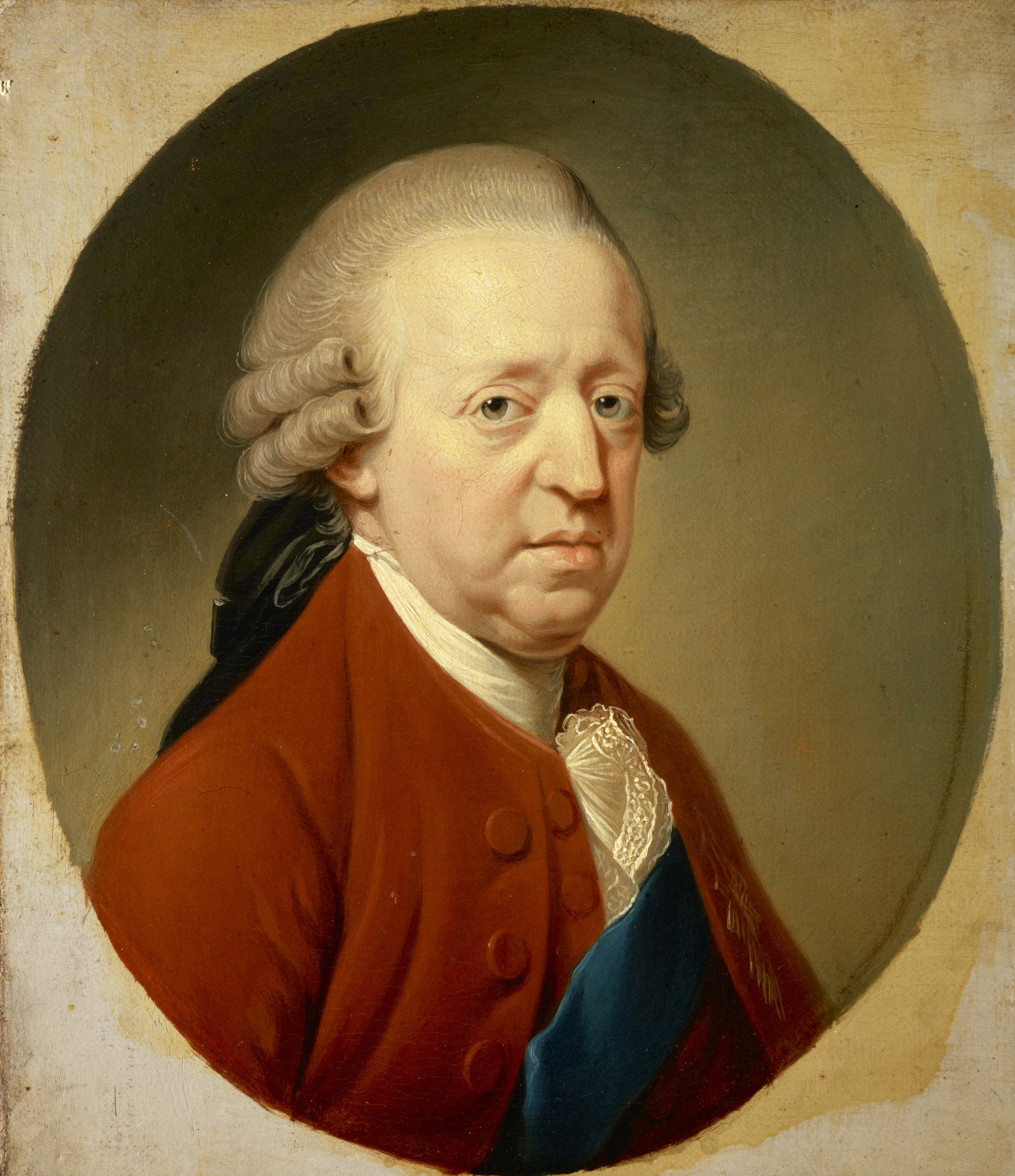
Charles Edward Stuart by Hugh Douglas Hamilton, circa 1785; Credit – Wikipedia
67-year-old Charles Edward Stuart died of a stroke on January 31, 1788, at the Palazzo Muti in Rome. He was initially buried in the Cathedral of San Pietro in Frascati, Italy where his brother Henry Benedict Stuart was Cardinal Bishop. Upon Henry’s death in 1807, Charles’ remains were transferred to the crypt in St. Peter’s Basilica at the Vatican where his father had been buried and where Henry was also buried. Besides the tombs in the crypt, in the left aisle of St. Peter’s Basilica is a monument to the Royal Stuarts, commemorating the last three members of the Royal House of Stuart: James Francis Edward Stuart, his elder son Charles Edward Stuart, and his younger son, Henry Benedict Stuart. With their deaths, the male line of the British Royal House of Stuart became extinct.
The Jacobite line of succession to the British throne passed to King Carlo Emanuele IV of Sardinia through the line of Henrietta of England, Duchess of Orléans, the youngest child of King Charles I of England. The Jacobite line of succession has proceeded over the years to the House of Savoy, House of Austria-Este, and to the House of Wittelsbach. It appears in the future, that it will proceed to the House of Liechtenstein.
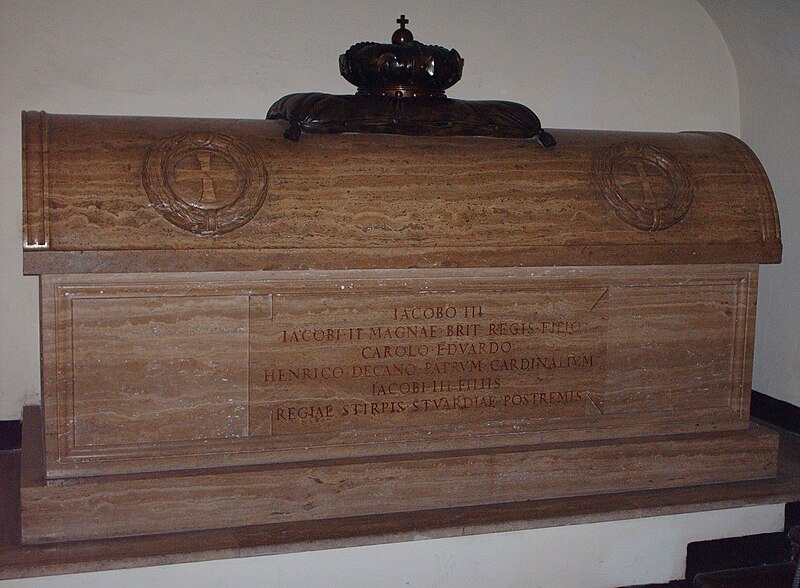
Tomb of James Francis Stuart and his two sons Charles Edward Stuart and Henry Benedict Stuart; Photo – Wikipedia

Monument to the Royal Stuarts in St. Peter’s Basilica; Credit – Wikipedia
This article is the intellectual property of Unofficial Royalty and is NOT TO BE COPIED, EDITED, OR POSTED IN ANY FORM ON ANOTHER WEBSITE under any circumstances. It is permissible to use a link that directs to Unofficial Royalty.
Works Cited
Abrufstatistik. “Charles Edward Stuart.” Wikipedia. N.p.: Wikimedia Foundation, 1949. Web. 2 Oct.
“Charles Édouard Stuart.” Wikipedia. N.p.: Wikimedia Foundation, 1 Jan. 1766. Web. 2 Oct. 2016.
“Charles Edward Stuart.” Wikipedia. N.p.: Wikimedia Foundation, 4 Sept. 2016. Web. 2 Oct. 2016.
“Flora MacDonald.” Wikipedia. N.p.: Wikimedia Foundation, 20 July 2016. Web. 2 Oct. 2016.
“Jacobitism.” Wikipedia. N.p.: Wikimedia Foundation, 9 July 2016. Web. 2 Oct. 2016.
Susan. “James Francis Edward Stuart.” British Royals. Unofficial Royalty, 13 Nov. 2016. Web. 2 Oct. 2016.
Williamson, David. Brewer’s British Royalty. London: Cassell, 1996. Print.






